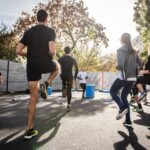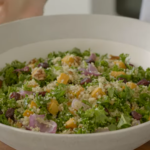When it comes to shedding those stubborn pounds around your midsection, one question often looms large: Is walking or biking better for belly fat? In this comprehensive blog post, we’re going to dive deep into this debate and provide you with the information you need to make an informed choice about your fitness routine.
In today’s health-conscious world, where aesthetics and well-being often go hand in hand, addressing belly fat has become a priority for many. Not only does it impact our self-confidence and body image, but excess abdominal fat also poses significant health risks. Research has linked belly fat to conditions such as heart disease, diabetes, and even certain types of cancer. Therefore, finding an effective method to combat belly fat is crucial for both our physical appearance and overall health.
We understand that everyone’s journey to fitness is unique. Some prefer the simplicity and accessibility of walking, while others find joy in the freedom of biking. But which of these activities holds the key to a slimmer waistline? This blog post aims to uncover the truth by comparing the benefits of walking and biking for belly fat reduction, helping you determine which activity aligns best with your goals and lifestyle.
II. Understanding Belly Fat
Before we can compare the benefits of walking and biking for belly fat reduction, it’s essential to grasp the nature of belly fat itself. Belly fat isn’t a one-size-fits-all concept; it comes in different forms. Subcutaneous fat lies just beneath the skin and is relatively harmless. However, the visceral fat that accumulates deeper within the abdominal cavity is the one we need to be concerned about. Visceral fat wraps around vital organs, increasing the risk of health problems.
Visceral fat isn’t merely a storage depot; it’s metabolically active, releasing hormones and inflammatory substances that can disrupt normal bodily functions. This disruption contributes to insulin resistance, inflammation, and other issues linked to chronic diseases.
Several factors contribute to the accumulation of belly fat. Genetics play a role, but lifestyle choices are equally important. Poor diet, lack of physical activity, chronic stress, and inadequate sleep can all contribute to increased visceral fat. This is where the choice between walking and biking becomes significant, as it can have a substantial impact on these factors.
III. Benefits of Walking for Belly Fat Reduction
Walking is a simple yet effective exercise for maintaining overall health. When it comes to belly fat reduction, it offers several advantages. First, it’s an exercise accessible to almost everyone. You don’t need special equipment or training to get started, making it an excellent choice for beginners or those with limited mobility.
Walking also burns calories, which is essential for losing belly fat. It’s a low-impact activity that can be sustained for longer durations, making it an efficient way to create a calorie deficit. Additionally, consistent walking can boost your metabolism, helping you burn more calories throughout the day, even when you’re not active.
Walking also has the advantage of being a sustainable exercise option. Unlike more strenuous activities, people are more likely to stick with a walking routine in the long term. Consistency is key in the battle against belly fat, and walking’s low barrier to entry makes it an accessible choice for many.
In our quest to answer the question, “Is walking or biking better for belly fat?” it’s clear that walking offers numerous benefits for those looking to reduce visceral fat. However, let’s not forget about the advantages of biking, which we’ll explore next in this blog post.
IV. Advantages of Biking for Belly Fat Reduction
While walking is an excellent choice for reducing belly fat, biking also presents a compelling case. Biking is a dynamic and engaging form of exercise that can provide a variety of benefits. When it comes to calorie expenditure, biking can be quite efficient. Depending on your speed and terrain, cycling can burn a significant number of calories. It’s especially effective when you incorporate uphill climbs or high-intensity intervals into your rides.
Biking, like walking, is a low-impact exercise, making it easier on the joints than some other forms of physical activity. This makes it an appealing option for individuals with joint issues or those who may find high-impact exercises uncomfortable.
Furthermore, biking can have a positive impact on both metabolism and muscle development. Regular cycling can help boost your metabolic rate and build lean muscle mass, which, in turn, can contribute to a reduction in belly fat. As you pedal, you engage various muscle groups, including your legs, core, and even your upper body when cycling uphill or on challenging terrain.
One of the significant advantages of biking is the enjoyment factor. Many people find cycling to be a highly enjoyable and social activity. Unlike some workouts that can feel like a chore, biking can be a pleasurable experience, which may encourage you to stick with it in the long term.
As we explore whether walking or biking is better for belly fat reduction, it’s clear that biking offers a unique set of benefits. It can be a highly effective way to burn calories, build muscle, and, most importantly, have fun while working towards your fitness goals.
V. Comparing Walking vs Biking
Now that we’ve discussed the advantages of both walking and biking for belly fat reduction, it’s time to compare these two forms of exercise. While both activities offer significant benefits, there are key differences to consider when determining which one is the better choice for your individual needs and preferences.
One critical factor to compare is calorie expenditure and fat burning. While walking and biking can both burn calories, the intensity and duration of the activity play a significant role. We’ll delve deeper into this aspect in the upcoming sections to help you make an informed decision.
Additionally, we’ll discuss the time efficiency of these activities, their accessibility and convenience, and how they contribute to overall fitness. By comparing these aspects, you’ll be better equipped to choose the exercise routine that aligns best with your goals and lifestyle.
VI. The Role of Diet in Belly Fat Reduction
While the focus of this blog post is on the benefits of walking and biking for belly fat reduction, it’s essential to underscore the role of diet in this endeavor. Exercise alone, whether it’s walking, biking, or any other form, can only take you so far in achieving your fitness goals.
A balanced diet plays a crucial role in reducing belly fat. Consuming excess calories, especially those derived from sugary beverages and highly processed foods, can counteract the benefits of physical activity. It’s vital to create a caloric deficit, which means burning more calories than you consume, to see significant changes in your belly fat.
Moreover, the quality of your diet matters. Foods rich in fiber, lean protein, healthy fats, and a variety of fruits and vegetables can support your efforts to shed belly fat. These foods help regulate blood sugar levels, control appetite, and reduce inflammation, all of which are essential factors in fat loss.
Incorporating dietary changes alongside your chosen exercise routine can lead to more effective and sustainable results. We’ll provide some practical dietary tips for belly fat reduction in a later section of this blog post.
VII. Combining Walking and Biking for Optimal Results
For those who appreciate the benefits of both walking and biking, combining these activities can be a winning strategy. A well-rounded exercise routine can prevent plateaus and keep your fitness journey exciting and motivating.
By incorporating both walking and biking into your weekly regimen, you can target different muscle groups, vary the intensity of your workouts, and enjoy the unique benefits each activity offers. For example, you might choose to walk on rest days or for low-intensity, steady-state cardio, and reserve biking for higher-intensity sessions.
This combination approach not only helps prevent workout boredom but also maximizes the benefits of both exercises. Walking can serve as active recovery after intense biking sessions, while biking can challenge your cardiovascular system and build strength in ways that walking alone might not achieve.
As we continue exploring the question of whether walking or biking is better for belly fat reduction, keep in mind that there’s no one-size-fits-all answer. Your ideal fitness routine may involve a combination of activities that suit your preferences and goals.
VIII. Tips for a Safe and Effective Exercise Routine
Regardless of whether you choose walking, biking, or a combination of both for belly fat reduction, safety and effectiveness should be at the forefront of your fitness journey. Here are some valuable tips to consider:
- Proper Warm-up and Cool-Down: Begin each exercise session with a warm-up to prepare your muscles and joints and conclude with a cool-down to help your body recover.
- Consistency and Gradual Progression: Consistency is key to seeing results, but it’s essential to start slowly and gradually increase the intensity and duration of your workouts to prevent injuries.
- Listening to Your Body: Pay attention to how your body feels during exercise. If you experience pain or discomfort, it’s crucial to address it and seek professional advice if needed.
- Hydration is Key: Staying adequately hydrated is essential for both walking and biking. Dehydration can lead to reduced performance and increase the risk of injury. Carry a water bottle and take regular sips during your exercise sessions, especially on hot days or during longer rides.
- Proper Form: Whether you’re walking or biking, maintaining proper form is crucial. In walking, stand tall, engage your core muscles, and maintain a brisk but comfortable pace. When biking, ensure your bike is properly adjusted to your body size, and pay attention to your posture to avoid strain on your back and neck.
- Incorporate Strength Training: Complement your walking or biking routine with strength training exercises. Building muscle can boost your metabolism and contribute to fat loss. Simple bodyweight exercises like squats, lunges, and push-ups can be done at home or in a gym.
- Rest and Recovery: Give your body time to recover between intense workouts. Overtraining can lead to burnout and increase the risk of injury. Aim for at least one or two rest days each week to allow your muscles and joints to recuperate.
- Set Realistic Goals: Establish achievable short-term and long-term goals for your belly fat reduction journey. These goals can help you stay motivated and measure your progress effectively. Celebrate your accomplishments, no matter how small they may seem.
- Listen to Your Body: Pay attention to any signs of pain, discomfort, or fatigue during your workouts. Pushing through pain can lead to injuries. If you experience persistent pain, it’s wise to consult a healthcare professional or a fitness expert for guidance.
- Vary Your Routine: Avoid workout plateaus by introducing variety into your exercise routine. Incorporate different routes for walking or explore new biking trails to keep your workouts fresh and engaging.
- Warm-up and Cool-Down: Prior to each exercise session, invest time in a proper warm-up. Warming up increases blood flow to your muscles and reduces the risk of injury. After your workout, engage in a cool-down routine, which can include gentle stretches to improve flexibility and reduce muscle soreness.
- Consistency and Patience: Consistency is the key to long-term success. Be patient with yourself and your body’s progress. Belly fat reduction takes time and effort, so stay committed to your routine and lifestyle changes.
By adhering to these additional tips for a safe and effective exercise routine, you can enhance the overall quality of your workouts, minimize the risk of injuries, and make the most out of your walking or biking journey towards a healthier, leaner you. Remember, fitness is a lifelong commitment, and prioritizing safety and well-being is paramount.
Conclusion:
In our exploration of whether walking or biking is better for belly fat reduction, we’ve unveiled the unique benefits of each activity. Walking offers accessibility, sustainability, and the potential for gradual fat loss over time. On the other hand, biking provides an enjoyable, calorie-burning, and muscle-building workout experience.
It’s important to remember that there’s no one-size-fits-all answer to this question. The effectiveness of your chosen exercise depends on your individual preferences, physical condition, and lifestyle. The most crucial aspect is finding an activity you enjoy and can commit to in the long term, as consistency is the key to success in any fitness journey.
Ultimately, the battle against belly fat isn’t won by exercise alone. A balanced diet plays an equally significant role, in complementing your physical activity efforts. By making wise dietary choices and creating a caloric deficit, you can further enhance the results of your chosen exercise routine.
As you navigate your fitness journey and work toward reducing belly fat, remember that progress takes time and patience. Set realistic goals, stay committed, and be mindful of your overall well-being. Consult with a healthcare professional or fitness expert to tailor a plan that aligns with your specific needs and goals.
By taking these steps and making informed choices, you can embark on a journey to a healthier, more confident you.
Frequently Asked Questions (FAQ)
As we conclude this informative blog post on whether walking or biking is better for belly fat reduction, let’s address some common questions that may still be lingering in your mind:
Q1. Can I spot-reduce belly fat by walking or biking?
No, spot reduction is a myth. You can’t choose where your body burns fat from. Walking and biking help reduce overall body fat, including belly fat, when combined with a balanced diet and consistent exercise.
Q2. How often should I walk or bike to see results?
The frequency of your workouts depends on your fitness level and goals. For beginners, aim for at least 150 minutes of moderate-intensity exercise, such as brisk walking, per week. More frequent or longer sessions can accelerate results.
Q3. Is high-intensity interval training (HIIT) better for belly fat reduction?
HIIT can be effective for burning calories and reducing belly fat, but it may not be suitable for everyone due to its intensity. It’s essential to find an exercise routine that you enjoy and can sustain over time.
Q4. How long does it take to see results in belly fat reduction?
Results vary from person to person. It’s common to start noticing changes in a few weeks, but significant changes may take several months of consistent effort.
Q5. Do I need to combine both walking and biking to reduce belly fat effectively?
Not necessarily. You can achieve belly fat reduction with either activity, or a combination of both, depending on your preferences. The key is to maintain a consistent exercise routine and a healthy diet.
Q6. Are there any specific exercises I can add to my walking or biking routine for better results?
Yes, incorporating core-strengthening exercises like planks, bridges, or leg raises can help target the abdominal muscles and complement your walking or biking routine.
Q7. Can I reduce belly fat without changing my diet?
While exercise is essential, diet plays a significant role in belly fat reduction. To see optimal results, it’s recommended to combine physical activity with a balanced diet that creates a caloric deficit.
Q8. What if I have physical limitations or health conditions?
Consult with a healthcare professional or certified fitness trainer before starting any exercise program, especially if you have physical limitations or health concerns. They can help you develop a safe and effective plan tailored to your needs.
Q9. How can I stay motivated to exercise regularly?
Setting achievable goals, tracking your progress, finding a workout buddy, and varying your exercise routine are effective ways to stay motivated and committed to your fitness journey.







